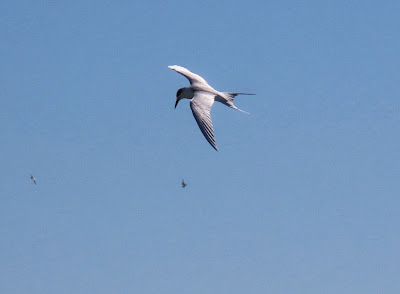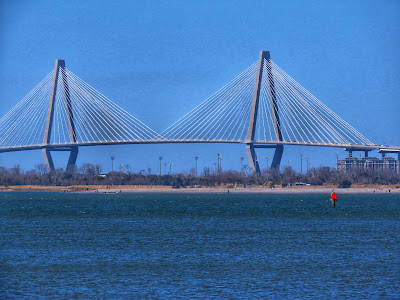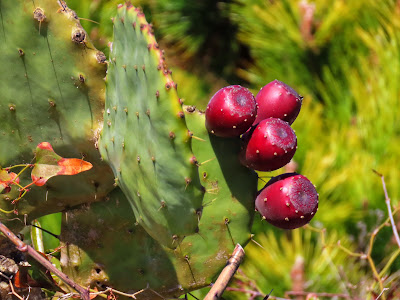We did not see what we went to try to see but this Sullivan’s Island visit turned out to be a day of surprises.
I did not realize I had photographed a new bird for me, a “lifer” as birders call such an encounter. This beach bird is called the Forster’s Tern. I did not notice the forked tail until I loaded my pix to my iPad.
A small “ternery” or flock of Forster’s Terns was circling the shallow beach waters and diving bombing to try to catch a small fish, minnow or other goodies.
Full credit to Whatbird.com’s forum for the identification help. The fork-tailed fella (and gal) gets the Forster name from naturalist Johann Reinhold Forster. He was an 18th century German who emigrated to England and was aboard Captain John Cook's send voyage around the world from 1772-1775. Learning this just made this cool bird even cooler in my book!
Another interesting find where these old wooden and iron structures fund on the beach in two different places on Sullivan’s Island. That's my lovely lady Alesia in the above photo.
Later, I posted these photos on Facebook’s popular site, Charleston History Before 1945.” I facetiously wondered if this was debris was from the Civil War Union blockade ship Housatonic, which in 1864 was sunk by the Confederate vessel H.L. Hunley. The Hunley was a first submarine to sink a ship in battle AND there is an historic sign not from from this spot saying the Hunley launched near this location.
My Facebook post has received hundreds of likes and dozens of comments. The consensus is that the remnants are not from that Yankee ship (darn!) but that they are, according to a knowledgeable responder: “The wooden structures you found are known as ship camels, used to breast ship and submarines away from the pier so the piling do not get damaged. They were also used by shipyard workers and ship maintenance folks as a stable platform from which to paint the hull of a ship from the waterline area upwards.”
We went to the beach to try to see a reported 30 container ships waiting to enter Charleston’s ports. This is part of the ongoing supply chain problem.
While we didn’t see a sea of backed up ships at sea we disdain see some dolphins not too far from shore. The dorsal fin seen in this photo had a chunk removed from it. Maybe from a battle with a shark?
We saw no container ships but did see a nice sailboat and what looks like a Great Egret in the foreground.
The double-diamond Ravenel Bridge glistened in the distance. The lights for the Patriots Point athletic fields in Mt. Pleasant are seen under the bridge.
South Carolina is not known for cactus, Palmetto trees yes. Cactus at the beach? Sure why not. I didn’t know the prickly plant produces berries.
A final treat this day was a first time visit to Stella Maris Catholic Church.
Stella Maris means "Star of the Sea" and indeed it is! The structure's cornerstone was laid in 1869 and it was completed in 1873. According to this S.C. Picture Project post, the bell tower was erected in 1882 and the stucco facade was added in 1885 just a year before the devastating Great Earthquake of 1886 damaged it and many many buildings around the Charleston area.
Here is what this lovely church looks like inside.



















No comments:
Post a Comment